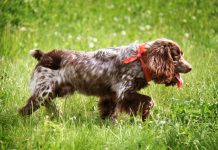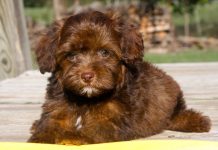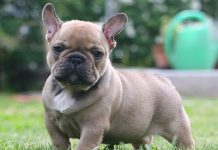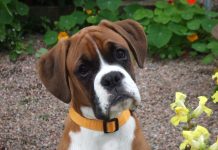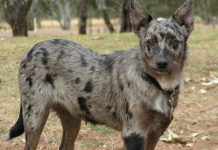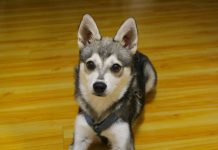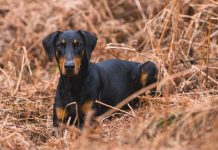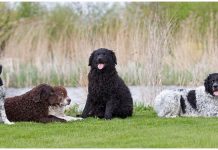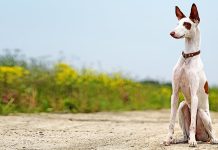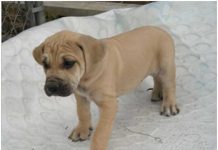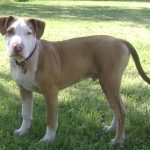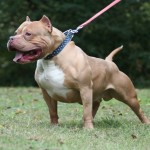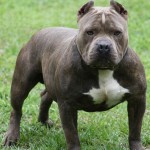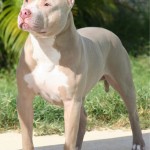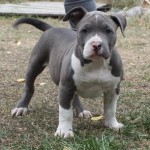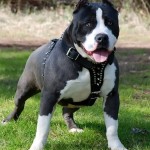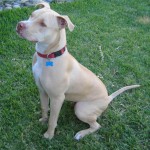Their reputation precedes them. All you need to do is to tell people that you have a Pit Bull and nefarious people will stay far away from your home.
History and Health :
- History :
These dogs began in England, where Old English Terriers and Old English Bulldogs were bred together to produce the Pit Bull Terrier. In England, these Pit Bull Terriers were used to bait bulls and bears, to fight roosters and to engage in other blood sports. When they arrived in the United States, they were used for a greater variety of purposes: to hunt; drive livestock; act as family companions; and guard the property from animal intruders (regardless of size). In keeping with the bigger country and the “everything is bigger” philosophy, the Pit Bull Terriers (by now called the American Pit Bull Terriers) were bred to be bigger than their British counterparts.
Yet, they could not escape their pit-fighting past and reputation. In the early 1930s, the American Kennel Club decided to rename it as the American Staffordshire Terrier for show purposes. Regardless of its name, they are also being used now for police dogs, therapy dogs and continue to act as companion dogs.
- Health :
They apparently have been bred well as they usually have a lower-than-average chance of getting medical conditions such as hip dysplasia (ever-present in most other breeds); hypothyroidism (often resulting in weight gain, reproductive problems, poor coat and other issues); heart disease (in which the dog has little energy or even dies suddenly, and which can be diagnosed by a veterinarian listening for a heart murmur); and luxating patella.
However, APBTs are still prone to allergies, especially skin allergies caused by fleas, grass, dust and pollen. This can result in tremendous itching and discomfort which the dog will attempt to alleviate by chewing, biting and digging. This activity, however, can result in other infections from the damaged skin. Their lifespan is anywhere from 8 to 15 years, but it is more commonly toward the higher end of the range.
Temperament & Personality :
- Personality :
They have been described as being friendly, affectionate, clownish, intelligent, obedient yet stubborn.
- Activity Requirements :
They need a great deal of exercise, for usually at least one full hour each day, and consisting of long walks, short runs or games such as fetch. Without it, they can become destructive (very destructive), and may even develop a neurosis of chasing after their own tails. They are probably best in a relatively large home with a yard as, even with frequent exercise, they may feel trapped within an apartment or condominium.
- Trainability :
As with virtually all dogs, training should be done early, consistently, and in a calm yet firm manner. Like many other Terriers, they will not respond well to harsh discipline. Unlike many other Terriers, they do not respond to treats because they have a very short attention span and quickly become disinterested. Thus, training can be a very intensive and time-consuming process.
- Behavioral Traits :
They do tend to be aggressive toward other dogs (even larger dogs) and will not back down from a challenge. Thus they must be kept on a leash when they are out in public. Socialization is important to every dog, and it is even more important to American Pit Bull Terriers so that they can interact as they should with other pets and with children.
Appearance & Grooming :
- Appearance :
They are not small dogs, but they share this dog’s propensity for separation anxiety. Thus, they must be given daily exercise and sufficient activities so that they are distracted when they are left alone.
- Size and Weight :
Males are generally 18-21” (46-53 cm), and females are 17-20” (43-51 cm) in height and males are anywhere from 35-85 lbs (16-39 kg) and females weigh 30-50 lbs (14-23 kg).
- Coat & Color :
They have a short, shiny and stiff coat. These dogs come in all colors, most commonly, blue, brown, red, gray, brindle, and black & white.
- Grooming :
Brushing with a stiff brush, wiping with a damp cloth, and bathing occasionally are all that is required.
- Body Type :
They are of the Medium-sized group of dogs, and have a corresponding body appearance.
Characteristics :
- They are inherently not good with children but, as with everything, they can be good if they are socialized and trained well.
- It is a bad idea to leave an APBT with a cat, unsupervised.
- It is definitely a bad idea to leave him with another dog, unless the latter is a family pet and the APBT has been socialized and trained well.
- Training is a long and laborious process due to their stubbornness and short attention spans.
- They are below average in terms of shedding.
- They are virtually born to be watchdogs.
- They are average in terms of intelligence.
- It is relatively easy to groom them.
- Where they are not outrightly banned (such as the United Kingdom and Ontario), they are very popular.
- They are extremely adaptable.
- They are not hypoallergenic.
Tasty Tidbits :
They are also known as the American Bull, American Pit Bull, American Bull Terrier, Staffordshire Terrier, Yankee Terrier, Yankee Bull Terrier, Pit Dog, and the Half-and-Half.
Care :
Exercise, obedience training, keeping them with you (rather than leaving them outside, as they form strong bonds with people and families), and not leaving them outside (as they do not tolerate cold weather) are all important in caring for your APBT.
Feeding :
They are commonly allergic to beef, corn, wheat and rice so should not be fed those, unless there is evidence otherwise.
Photos, Images, Pics, and Pictures of American Pit Bull Terrier :
Information and Facts of American Pit Bull Terrier :
- The full name is American Pit Bull Terrier
- It is also commonly known as APBT, Pit Bull and Pit Bull Terrier
- It originated in the United States
- It is of the Medium-sized Dog breeds
- It belongs to the Terrier dog breeds
- Their expected lifespan has been reported as being anywhere from 8 to 16 years
- Males are generally 18-21” (46-53 cm), and females are 17-20” (43-51 cm) in height
- Males are anywhere from 35-85 lbs (16-39 kg) and females weigh 30-50 lbs (14-23 kg)
- They are of all colors & shades with black, fawn, red, brindle, tan, brown and white being common
- In the U.S., puppies are usually priced between $500-700; in the U.K., they are banned
- They sleep for an average amount of time
- They descended from Old English Bulldogs & Terriers, and are related to the Old Family Red Nose.
Also Read: Unlock Opportunities: Learn How to Apply for Bank of America Credit Card


